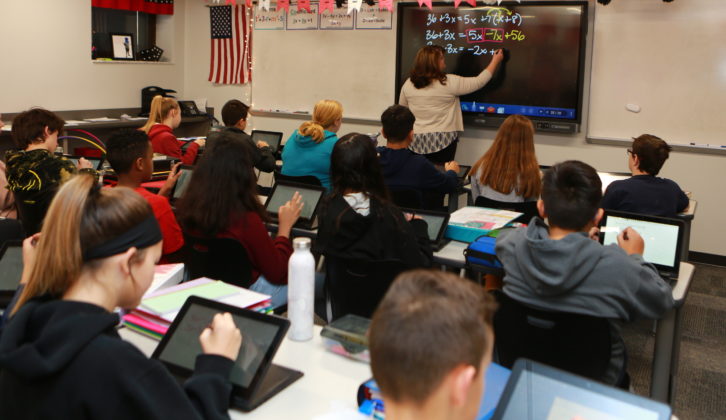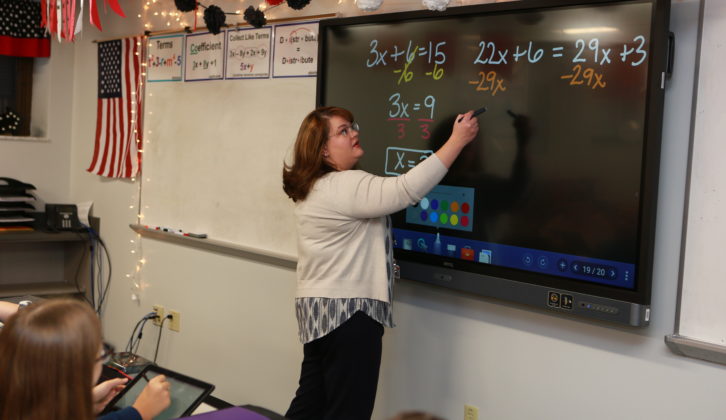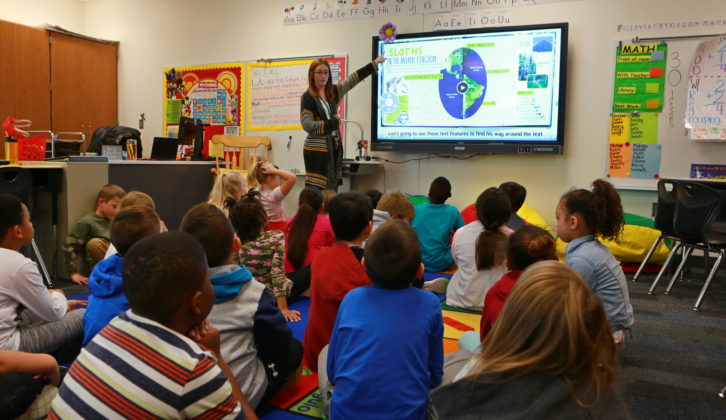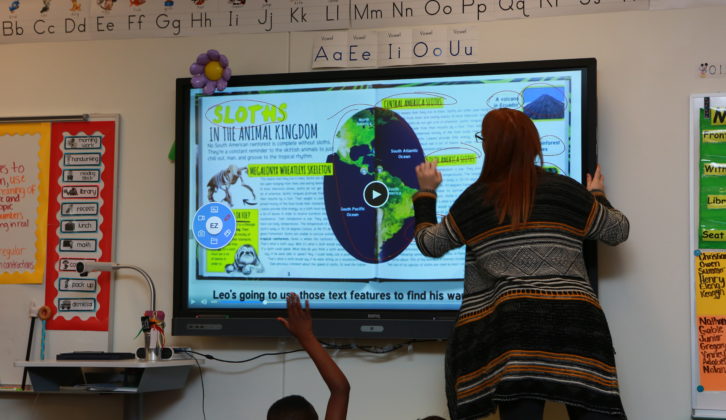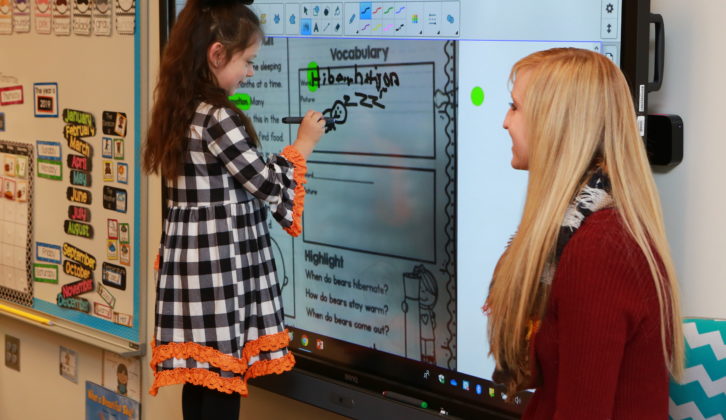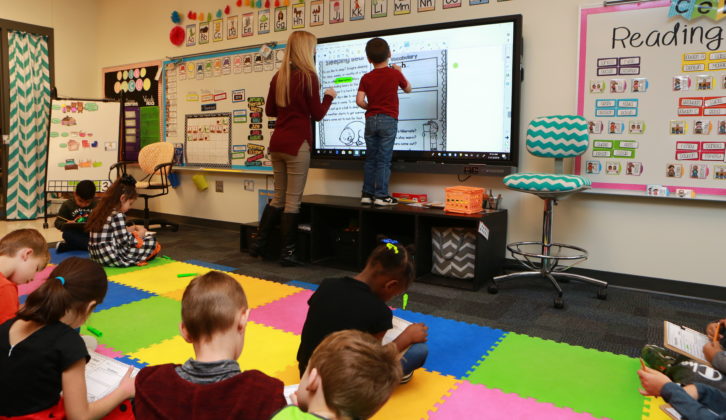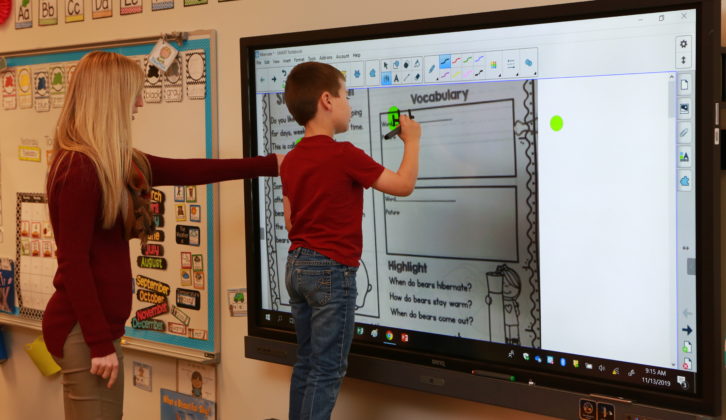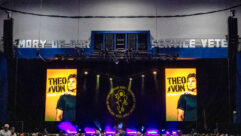Lafayette School Corporation Selects BenQ Interactive Flat Panel Technology to Move the School into the Future
Lafayette School Corporation in Indiana is dedicated to nurturing and inspiring its students through a thoughtful approach in learning and investing in technology. Being a 1:1 district, as part of their daily curriculum, every student has access to tablets. This is just one of the many technology initiatives the school introduced over the past several years. Lafayette put an emphasis on updating their aging touch boards and displays that were no longer reliable in every classroom.
“Ten years is a really long time in technology years and our failing classroom audio/video systems were starting to be really expensive to service and maintain. We didn’t want to simply replace them. We wanted to upgrade the experience with a solution that would truly work for our students and staff and make an impact,” said Li Zhao, Chief Technology Officer at Lafayette School Corporation.
Over an extensive two-year period of looking at interactive displays, Zhao tested six different makes and models. The main objective was to find a solution that would satisfy the needs of every classroom within the district over the next few years. This meant it not only had to meet the demand for whiteboard technology, but also scale to the school’s future use cases by providing high-quality imaging for the school’s robust IPTV and digital signage network.
Among the options was BenQ’s RP Series interactive flat panels (IFP). More than 40 65-inch IFPs were installed across eight schools on a trial basis. After the pilot, BenQ’s RP Series interactive flat panels were unanimously selected for their benefits.
“Everything about the BenQ RP Series IFPs is designed for ease of use and engagement in the classroom — from the placement of the HDMI ports, to the onboard education apps, and even the ability to split the screen to display more than one image simultaneously,” said Zhao. “But the benefits don’t end there. BenQ has packed them with tools that make it easier for my department to install and manage every panel, which, as we continue to integrate them into every school, has become a large undertaking.”
The RP Series of IFPs offers an abundance of features that are great for encouraging engagement inside and outside of the classroom. Utilizing cloud-based collaboration combined with BenQ’s EZwrite 5.0 platform, the IFP becomes a hub for teachers and students to share ideas, notes, opinions, and make annotations on screen captures from any app, video, website, document, or image. Regardless of location, all participants can also make annotations on the screen from their personal devices. Teachers can download and upload files to cloud services such as One Drive, Dropbox directly from their screens. This feature allows for the elimination of having to access files from a USB making it easier for teachers to start class and modify material instantly. For Lafayette, enabling simple integrations allowed for HDMI inputs to the teacher’s laptop, Apple TV, a Wi-Fi wireless presentation dongle, and a DVD player.
“All the ports are right there on the front, which was one of our requirements,” said Zhao. “When they’re on the side of up front, it grants quick access. If they’re in back, it’s really awkward trying to plug them in or troubleshoot any issues. It’s a simple design element that in our testing really stood out.”
The IFPs also come with dual pens permitting two users to write or draw simultaneously with different color at the same time. Within Brush Mode, participants can use a physical paintbrush to molding technology and art together. With the handwriting recognition feature, the IFP instantly converts written text, numbers, forms, and drawings into easily legible digital text without having to switch modes.
BenQ is the only IFP engineer to prioritize the combination of healthy technology with innovative capabilities that minimize the risks associated with increased screen use. Putting health first, the IFPs include an anti-glare, bacteria-resistant screen that kills most germs that accumulate on the screen’s surface and prevent cross-infection or epidemic in classrooms; a CO2 air-quality sensor monitors the CO2 concentration level in classrooms; and BenQ’s Smart Eye-Care technology, which is certified to remove the blue light and flicker that can cause eye strain and CVS-related eye problems.
The IFP series also offers an extra level of flexibility for device control through Voice Assistant or remote control, allowing teachers to control the flow of the class and ensuring a smoother classroom experience. They can start a timer or search the internet from wherever they are within the classroom.
For Lafayette, BenQ IFPs have become the standard. More than 125 units were installed in all eight of their elementary schools, including the district’s new elementary school where BenQ’s 75-inch 4K IFP was integrated into each of the school’s 36 classrooms. The RP Series IFP were also installed in three high school special education classrooms. Each building also has access to a BenQ IFP installed on a mobile cart to provide the collaboration tools in other areas or to operate as a backup. Within the next few months, 75 more units are planned to be installed in the junior high school starting summer of 2019. As the Lafayette organization continues to grow, the technology department is examining other areas where the BenQ technology could be useful. Most recently, the school opened up a new career center and plans are underway to install the panels into the support space.
